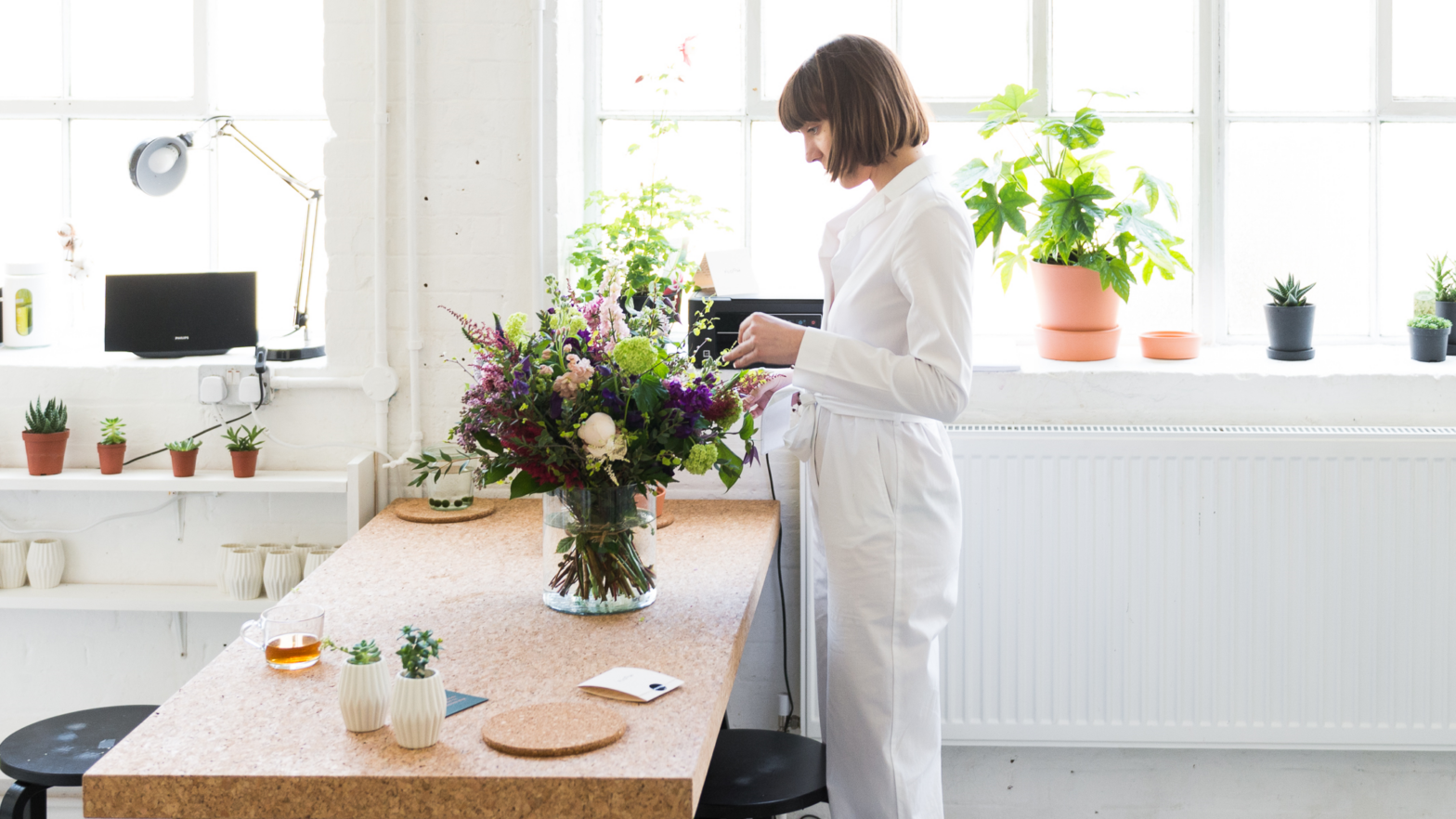Floom connects customers with independent florists online. Unlike some online florists, Floom gives indie florists more control, enabling them to show off their creativity and personal style.
Founded by 31-year-old entrepreneur Lana Elie in 2016, Floom calls itself a curated marketplace for indie florists.
So far, just under 150 florists have signed up to the platform, which also offers delivery in New York and Los Angeles.
Floom, whose headcount has grown from just seven staff last December to 18 staff at time of posting, is projected to make £5 million in sales in 2019.
Lana Elie talks to Growth Business about how important persistence is, why Floom is evolving with its new B2B proposition, and why she wants to become the Shopify of floristry.
Where did the idea for your business come from?
It came from a number of places but mostly just frustration when I sent flowers myself. I grew up in Bali and have friends and family in a lot of places. As I result, I was sending flowers at weird times of the day. I phoned up one florist in Australia and discovered later what finally arrived was not at all representative of what I thought I’d bought.
It took years later for me to formulate what the opportunity was and what the business needed to be.
For me, the question was how to expand the technology so that customers and florists both get a better experience?
What’s the difference between Floom and Interflora?
The gap was how do you buy something from someone local and independent that shows their creativity, rather than what they’ve been told to make?
Interflora is an e-commerce website that just uses stock photography. The question then is, how you buy something that matches the photo? In our scenario florists tell us what’s in stock. Technically, Floom works the same way as Interflora but it flips the model, so florists tell us what they have.
‘Basically, we’ve created the Shopify for floristry’
What experience did you have in your sector?
In terms of the flower industry itself, absolutely none. I was a frustrated customer and I think that’s the best experience you can have, being on the receiving-and-sending side. I think that helped me actually because I was not limited by existing cultural and social constraints.
Do you consider yourself a disruptor?
Floom is about changing the industry. That’s why investors have invested in Floom. They align with the vision that the industry needs to be changed because it’s taken too long for technology to change it for the better. And there’s a huge opportunity to put the right pieces in place.
From the back-end perspective, our website is hugely unique compared with any other in the market. It gives the florist an opportunity to sell what they love making to the distance they want to sell it on the days that suit them. So, it supports this movement into remote working.
Tell me about this new back end you’re building for florists
We’ve learnt so much about how things fall apart in the logistical process. There are so many touchpoints in receiving flowers from the grower to the customer, and we’ve tried to incorporate technology into all these steps. We want to make the customer happy but also the process more seamless for the florist.
What we’re doing is building business management tools for florists. Basically, we want to take care of everything the customer doesn’t see.
This was after understanding how florists use our platform, but also understanding the limitations of what was available for the rest of their business.
We’ve taken the learnings we have from the Floom.com dashboard into inventory management, website building and electronic-point-of-sale (Epos) systems. We’re creating the back-end tools you need to run your business. We’re building it now and it’s out to some florists for testing it. We hope to launch in June.
Basically, we’ve created the Shopify for floristry.
What funding did you have to start the business?
I just pushed the channels I saw available to being one step or two steps removed from a potential investor. At the time, I was involved in digital marketing for Burberry and Gucci.
One of the things I did was look at board directors of companies with similar models to Floom and I would scrape their details and contact them through LinkedIn, saying ‘You should be interested in this. You could add value.’
Elsewhere, I gave my time free to start-ups which had just raised, so I could introduce my own concept to their investors.
I was very luck to have been working for a start-up that had just raised from Tom Singh, founder of New Look, who became my first pitch and my first yes. Alvaro Munoz, CEO of AMC Fresh Group, whose subsidiary MM Flowers handles flower distribution to M&S and Tesco, also came on board. Between them, they invested £300,000 in January 2016.
We did a Crowdcube raise for £350,000, which overfunded and eventually raised somewhere between £620,000 and £650,000. More than 300 investors took an 18 per cent stake in the business.
Then in October last year, we raised £2 million led by venture capitalists Firstminute Capital and Pembroke.
What would you say to entrepreneurs mulling whether to bring in outside investors?
Be aligned on what you want your business to be. Many a time, people think they want investment, but an investor wants specific things, not really thinking about the team or the founder, but just to make a return on their money. Be realistic that your business goals are aligned with their goals. Know your business plan and be prepared to iterate it, so that you’re knowledgeable about your business plan and can share your vision in a room.
How do you measure success?
That’s a difficult one. By the time I’ve hit one milestone, I’m already on to the next four. On the B2C side, it’s helping the customer to have a seamless experience.
Who has most influenced your working life?
Greg Stogdon, senior vice-president of creative media at Burberry, was a mentor without him even knowing it. He was so humble and so inspiring. I’ve been lucky to have that figure either above me or even below me that I found really inspiring, and I took tokens of how they did things, whether it was how they wrote emails or how they addressed a room. I’ve been lucky to have multiple pieces of inspiration from many people.
How do you like to relax outside work?
That’s a hard question because I do find it quite hard to switch off. That said, I am really into board games and food. I like to eat out. I also play scrabble a lot on my phone (laughs).






